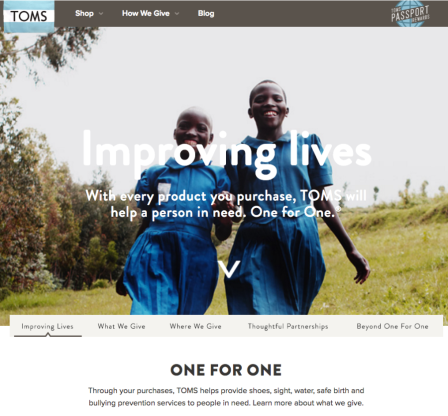Digital Storytelling That Sells
August 3, 2016
Everyone loves a story – something they can relate to, something that can make them feel good about themselves, make them chuckle, or help them relieve some stress. A good story is a journey that sticks in a person’s mind. Whereas slick brochures and sales messages may provide an instant impact, they are quickly forgotten. From athletic gear to zoological supplies, digital storytelling is becoming a better way to engage your audience, increase the amount of time they spend on your website, and create a higher number of social shares that reach more prospects of your intended audience. This is because, with storytelling, users are, in their minds, easily seen as the main character. They can see themselves doing what is being shown to them. This brings familiarity to the table and that helps sell products and services.
What is Digital Storytelling?
Storytelling in a digital format allows any small business owner to bring their brand to life. You’re selling more than a widget, you’re selling the story behind that widget – how it came to be, how it can make your customer’s life easier or take away their pain. Donald Draper embraced it best through his character on Mad Men, and now we can bring this idea even closer to your prospects through an online format.

When crafting your story, you’ll want to treat it like a book with emotion, credibility, and authenticity. Here are some ways in which to weave your message into the mind of your future customers.
How to Present Through Digital Storytelling
Theme
Your digital story theme is your core message. Why does your business exist? The obvious answer is to “make money” – but this answer does not dive deep why your brand exists. How does your product or service help make your prospect a hero – either by making their life more pleasurable or taking away a pain? A few examples that come to mind are these brands building a theme around making their customers feel good: Toms (Improving Lives), Chipotle (Food with Integrity), Uber (Your Ride, On Demand). See how the messages in each of these examples are flipped?

Characters
Your brand story will inherently have a whole cast of characters. You’ll have mentors, influencers, supporters, detractors and even villains. Call upon each character for a contributing role in your overall digital story. For example, your blog content can offer up topics from the perspective of your brand enthusiasts, it could support your position in your industry by offering up an expert voice from your CEO, it could even provide the perspective of any detractors – complete will your counter position. The fact is every character lends a voice and can add personality to your story.
Plot
When crafting your plot you’ll want to think about a few techniques.
- Stagger Emotional Messages with Facts – Don’t hit your audience with both facts and emotional messages at the same time. Use the emotional aspects of your messages first, and then after you’ve hooked them, showcase aspects of your product or service that may relate and back the entire message up with facts. Starting with facts and following up with the message often backfires.
- Show Credibility – Having your message delivered by a credible resource – such as an industry expert or brand-enthusiast – will not only keep your audience engaged but also will add more depth to your theme.
- Be Simple and Straightforward – Don’t make your audience guess about what is going to come next. You aren’t creating a horror movie. A bit of suspense is fine but make sure you answer your audience’s questions quickly. Otherwise, you’ll have them confused instead of wanting to buy.
- Be Real as You Relate – Content that shows that their problem is something that you have solved in the past will open up doors of opportunity for your audience, and create a need that might not have been very important previously.
Showtime
Showing your digital story should be easily accessible across all platforms. Think text in a blog post, video in Snapchat, lifestyle images on Instagram, infographics on Pinterest and, of course, any of these ideas on Facebook. Take your story further with all the platforms available to you.

Using these ideas can help you create excellent digital storytelling that sells your product or service, and keeps current customers more engaged, too. While getting new customers interested is always a plus, a sign of a strong company is repeat clientele who believe in your company enough to let their friends know about you. Having interesting and engaging digital storytelling content can increase this and help you reach potential customers that might not have been available to you before.
Business & Finance Articles on Business 2 Community
(16)













